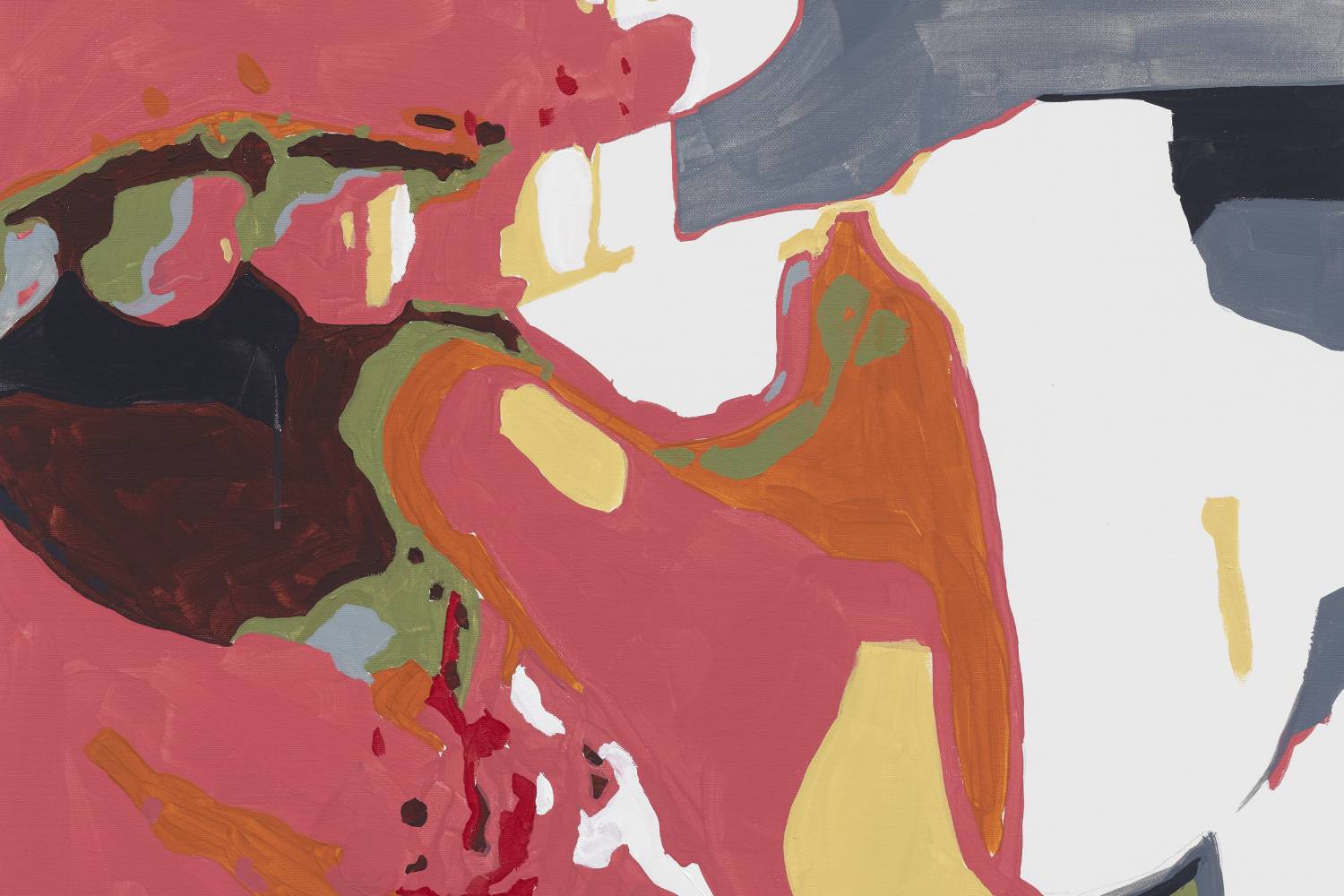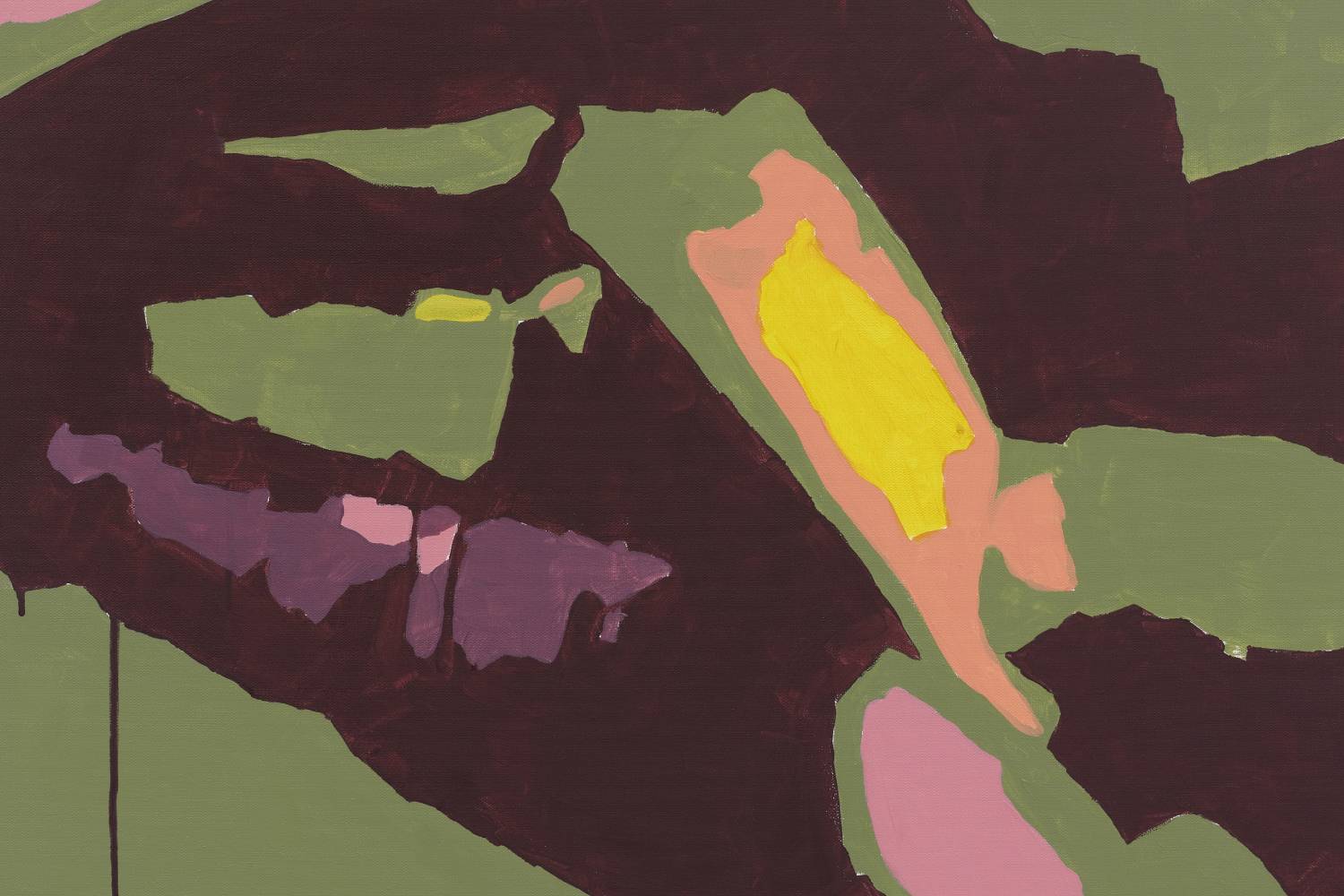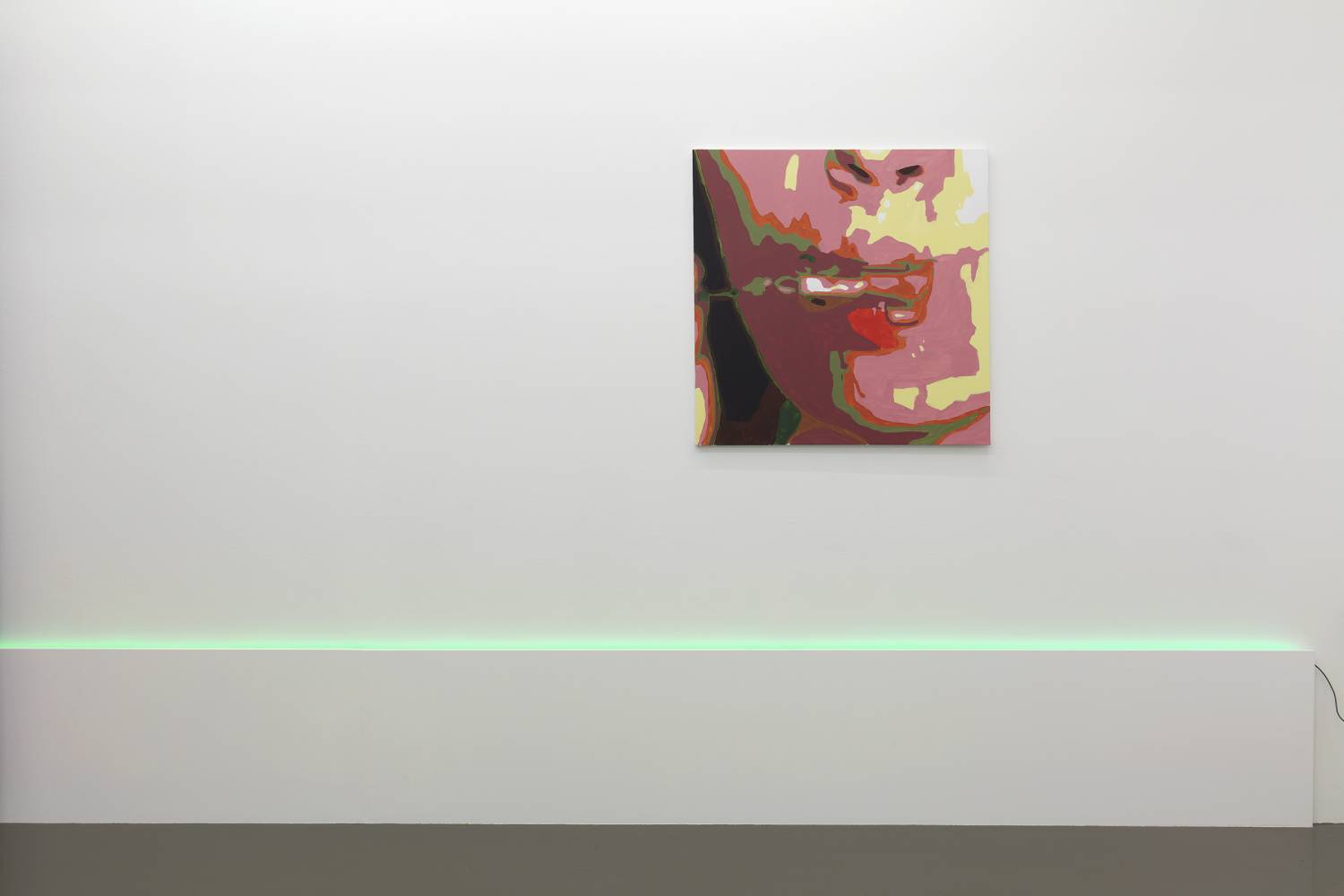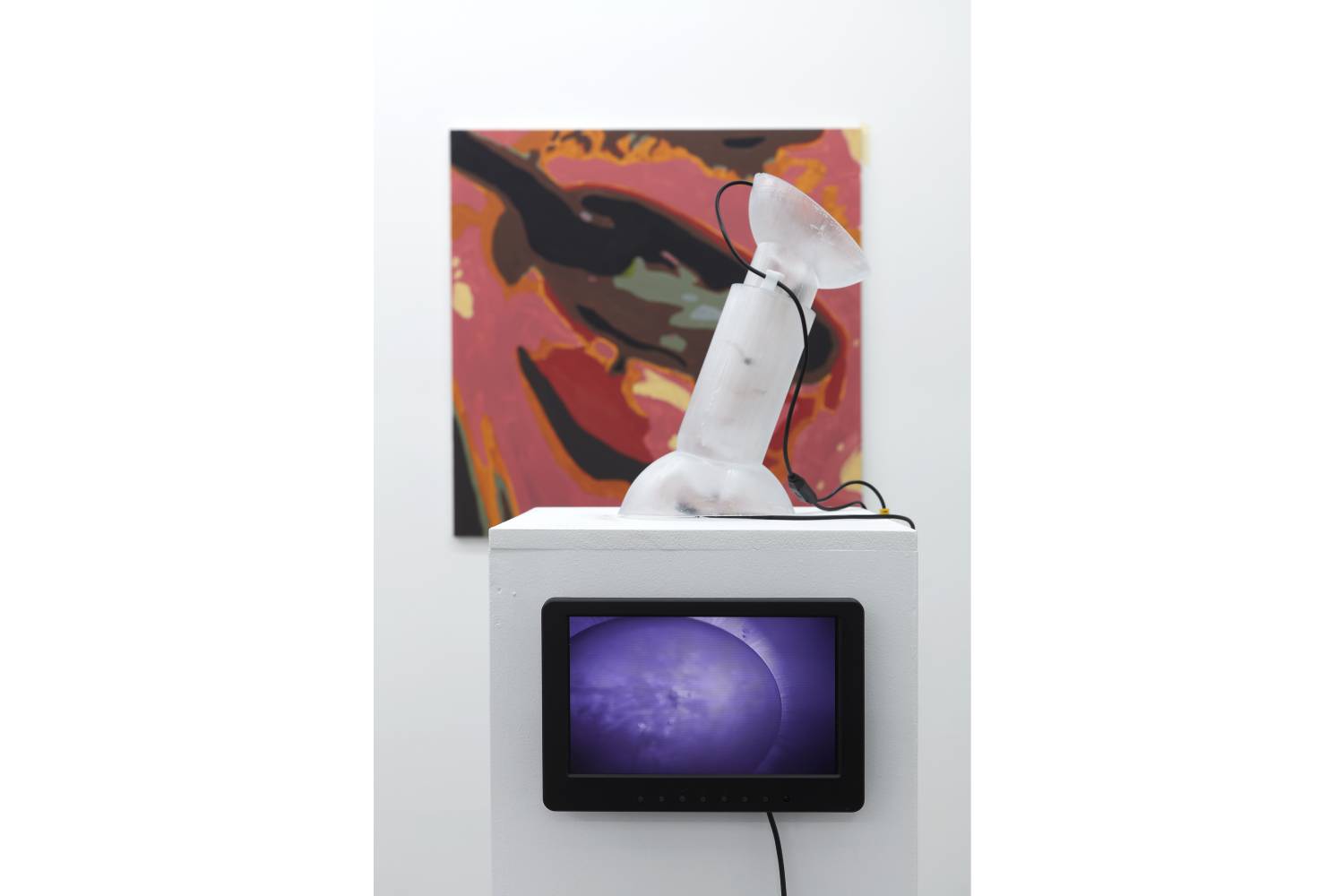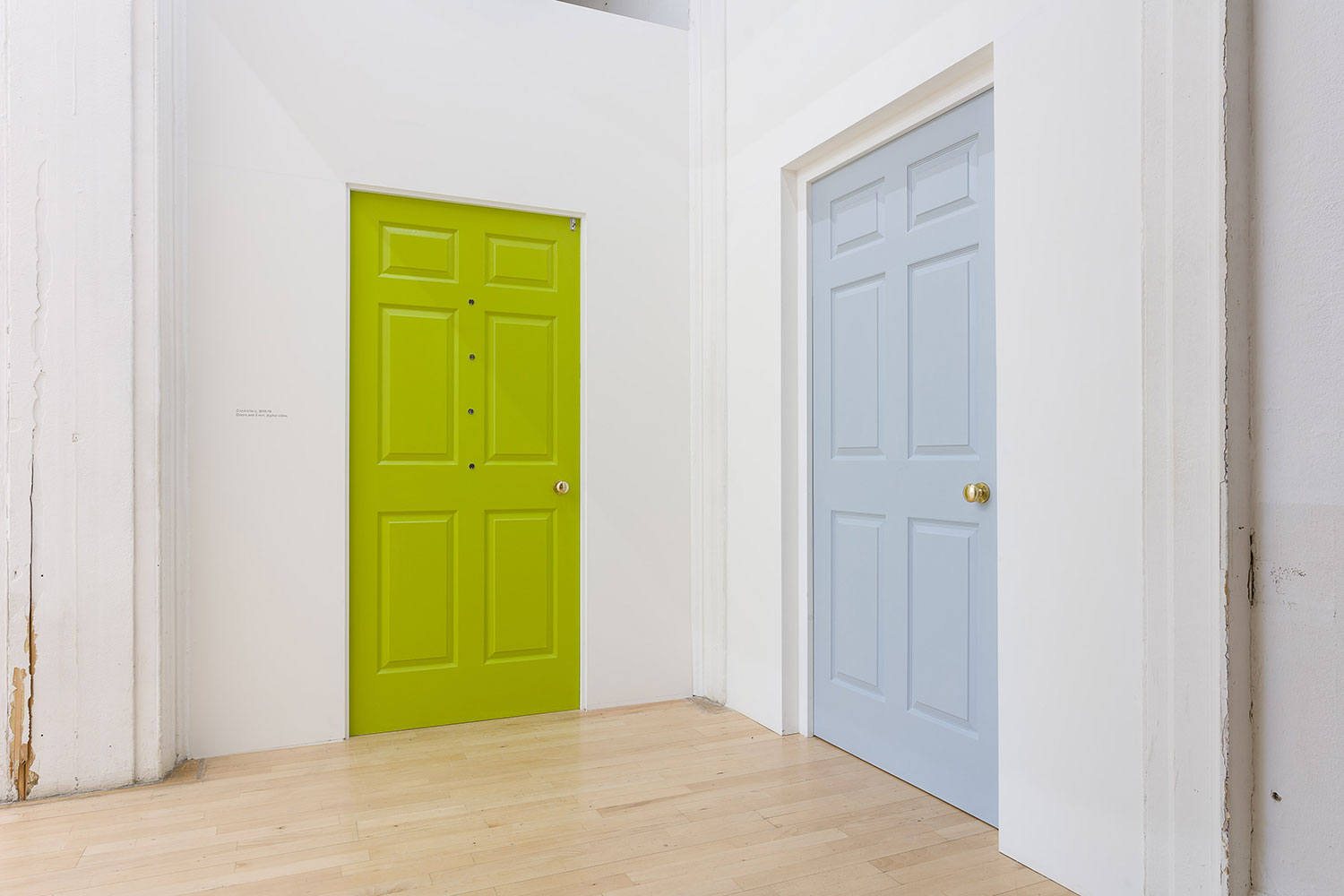The title of Morag Keil’s exhibition at Jenny’s, “Needs & Wants,” begs the question: What does this artist need and what does she want? Are these two ideas in opposition or harmony with each other? Desire generally has little to do with the rational; what we want is rarely reconcilable with what we need.
The eight paintings (Eating 1–8) in the show are blockily rendered close-ups of female mouths satiating themselves, fulfilling some kind of need. They are described as “digitally posterized” in the press release, but up close these paintings dissolve into fields of paint rather than pixels (more Clyfford Still than Thomas Ruff). Sitting on a plinth, one of four 3D-printed resin sculptures is a transparent phallic object inserted into a receptacle. Wires dangle out of this union and connect to two spy cameras that feed into monitors on opposite sides of the plinth. The small screens display static, indeterminate images that could be endoscopic or ultrasonic; what you see are blobs. However, if you wave your hand around the sculpture the video changes, confirming it’s a live feed. There is another pole-and-hole set on its own, separated and without a live feed, yet equipped with wires suggesting that at any moment it could be “put to use.” Despite their presentation on pedestals, the objects feel utilitarian, more like tools than things to look at. They’re titled Camera 1–4, emphasizing this use value and the images they could generate. There is one more work in the space, a subtle intervention in which a panel the same color as the wall has been installed with a faint green glow emanating from behind it. The effect is that of an accent wall, a cheap customization, the type you might see in a Boba place as a backdrop to show yourself slurping. The objects in this show are all capable of generating images. You can join in: hold up your phone and watch the paintings become a little more photographic as the screen’s slight boost in contrast and saturation sharpens edges and clarifies.
The subject matter here is not random, chosen to demonstrate style or virtuosity, unlike so much contemporary figurative painting. There is a dull probing aspect to the content: seeing inside an open mouth, cameras penetrating a phallus. The intimacy of the body without sex invokes Véréna Paravel and Lucien Castaing-Taylor’s documentary film De Humani Corporis Fabrica (2022), in which the camera, moving in and around human bodies, depicts computer-aided surgery and close-ups of catheters in bleeding penises. This is soundtracked by the voices of doctors going through the tedium of care, talking about anything except their patients. The detachment of a doctor is a logical consequence of their profession, and the works here have a similar quality. Keil’s paintings could be mukbang, but they could also easily be blowjobs. The pragmatic show title nudges us away from a definitive lascivious reading. The typology of open mouths suggests categories of photography: porn, pro-ana content, or a Flickr group from the ’00s. What are the contemporary boundaries of image sharing? Do people send videos of themselves fucking to their group chats, laughing about how they look or the sounds they’re making? We’re all our own little image production factories now; intimacy is no longer between two parties but diffused and doled out in drops to an amorphous crowd. Ethical non-monogamy indeed! It’s so easy to share, so hard to withhold. We gorge ourselves on images of bodies, browsing and clicking until we find the right one. The weight of the corporeal has become integrated with the breeziness of the “poor image.”
So what does Keil need? Maybe there’s a hint in the show’s flier circulated online, with its image of a woman’s legs in business casual, walking in front of cartoon houses with keys falling from the sky. It suggests an end to the churn of the shallowly desired image, a world in which basic human desires are tangible, at hand instead of floating just out of reach.

